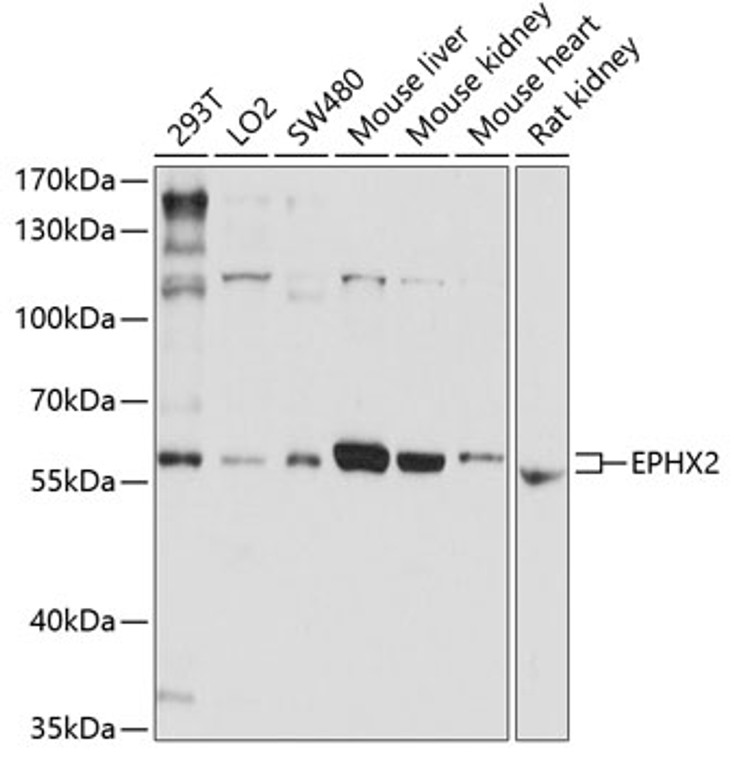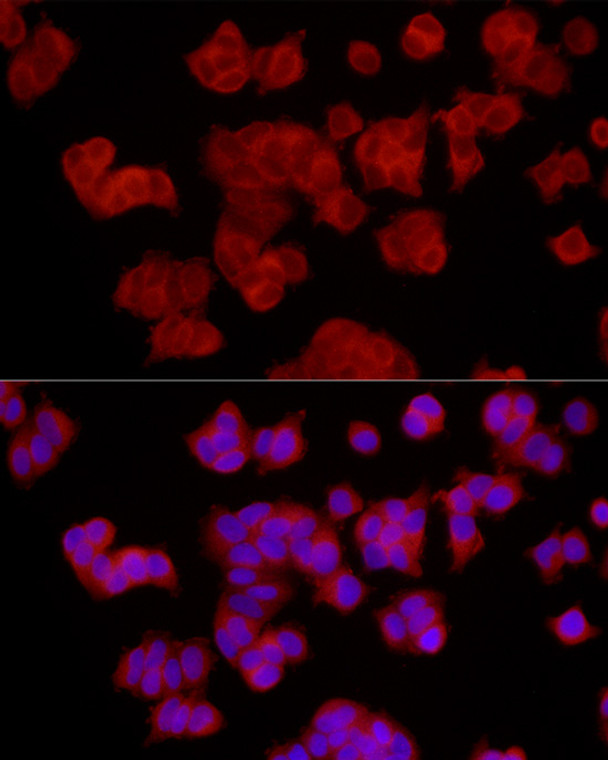| Host: |
Rabbit |
| Applications: |
WB/IF |
| Reactivity: |
Human/Mouse/Rat |
| Note: |
STRICTLY FOR FURTHER SCIENTIFIC RESEARCH USE ONLY (RUO). MUST NOT TO BE USED IN DIAGNOSTIC OR THERAPEUTIC APPLICATIONS. |
| Short Description: |
Rabbit polyclonal antibody anti-EPHX2 (30-240) is suitable for use in Western Blot and Immunofluorescence research applications. |
| Clonality: |
Polyclonal |
| Conjugation: |
Unconjugated |
| Isotype: |
IgG |
| Formulation: |
PBS with 0.01% Thimerosal, 50% Glycerol, pH7.3. |
| Purification: |
Affinity purification |
| Dilution Range: |
WB 1:500-1:2000IF/ICC 1:50-1:200 |
| Storage Instruction: |
Store at-20°C for up to 1 year from the date of receipt, and avoid repeat freeze-thaw cycles. |
| Gene Symbol: |
EPHX2 |
| Gene ID: |
2053 |
| Uniprot ID: |
HYES_HUMAN |
| Immunogen Region: |
30-240 |
| Immunogen: |
Recombinant fusion protein containing a sequence corresponding to amino acids 30-240 of human EPHX2 (NP_001970.2). |
| Immunogen Sequence: |
LALPRGLLNDAFQKGGPEGA TTRLMKGEITLSQWIPLMEE NCRKCSETAKVCLPKNFSIK EIFDKAISARKINRPMLQAA LMLRKKGFTTAILTNTWLDD RAERDGLAQLMCELKMHFDF LIESCQVGMVKPEPQIYKFL LDTLKASPSEVVFLDDIGAN LKPARDLGMVTILVQDTDTA LKELEKVTGIQLLNTPAPLP TSCNPSDMSHG |
| Post Translational Modifications | The N-terminus is blocked. The covalent modification of cysteine by 15-deoxy-Delta12,14-prostaglandin-J2 is autocatalytic and reversible. It may occur as an alternative to other cysteine modifications, such as S-nitrosylation and S-palmitoylation (Probable). |
| Function | Bifunctional enzyme. The C-terminal domain has epoxide hydrolase activity and acts on epoxides (alkene oxides, oxiranes) and arene oxides. Plays a role in xenobiotic metabolism by degrading potentially toxic epoxides. Also determines steady-state levels of physiological mediators. Bifunctional enzyme. The N-terminal domain has lipid phosphatase activity, with the highest activity towards threo-9,10-phosphonooxy-hydroxy-octadecanoic acid, followed by erythro-9,10-phosphonooxy-hydroxy-octadecanoic acid, 12-phosphonooxy-octadec-9Z-enoic acid and 12-phosphonooxy-octadec-9E-enoic acid. Has phosphatase activity toward lyso-glycerophospholipids with also some lower activity toward lysolipids of sphingolipid and isoprenoid phosphates. |
| Protein Name | Bifunctional Epoxide Hydrolase 2 Includes - Cytosolic Epoxide Hydrolase 2CehEpoxide HydrataseSoluble Epoxide HydrolaseSeh - Lipid-Phosphate Phosphatase |
| Database Links | Reactome: R-HSA-2142670Reactome: R-HSA-9018682Reactome: R-HSA-9033241 |
| Cellular Localisation | CytoplasmPeroxisome |
| Alternative Antibody Names | Anti-Bifunctional Epoxide Hydrolase 2 Includes - Cytosolic Epoxide Hydrolase 2 antibodyAnti-Ceh antibodyAnti-Epoxide Hydratase antibodyAnti-Soluble Epoxide Hydrolase antibodyAnti-Seh - Lipid-Phosphate Phosphatase antibodyAnti-EPHX2 antibody |
Information sourced from Uniprot.org
12 months for antibodies. 6 months for ELISA Kits. Please see website T&Cs for further guidance










